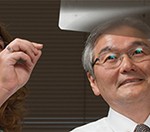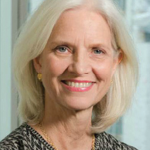For Dr. Brenner, this has been a fruitful approach. Following his discovery of a new T-cell receptor – the gamma delta T-cell receptor – he found a new pathway of antigen presentation (mediation by CD1), which activates cell immunity. Later, he discovered cadherin 11, which plays a role in the damage caused by the synovium to the joints in RA. These discoveries have been informed, he says, both by his immersion in basic science and his time in the clinic. When he was recruited (1991) and became chief of rheumatology, immunology, and allergy at Brigham and Women’s Hospital (1995), it became possible for him to combine his interest in fundamental biochemistry and molecular immunology with clinical disease, especially rheumatic diseases.
Making the Leap
When Dr. Yokoyama established his first laboratory at University of California, San Francisco, he decided to focus his investigations on the Ly49 molecule, which he first studied while working at the National Institutes of Health in the laboratory of Ethan Shevach, MD, head of the cellular immunology section at the National Institute of Allergy and Infectious Diseases. Ly49 (now known as Ly49A), originally identified on a T-cell tumor, appeared to belong to a polymorphic family of molecules and was expressed on a natural killer (NK) cell subset. At the time, says Dr. Yokoyama, he chose to deviate from other active areas, particularly investigation of T cells, to work on the NK cell. “I think a lot of people had difficulty understanding why we would do that,” he reflects. “But I was trained and exposed, in Ethan’s lab, to follow where the data take you. We wanted to figure out the function of this putative receptor. When we first began working on NK cells, almost everyone thought the cells had something to do with tumor surveillance. Yet buried in the literature were results from a number of people clearly pointing out that NK cells were important in innate immune control, particularly of viral infections.”
We, as scientists, should be doing a better job of educating the public about the way in which science is conducted. – Wayne M. Yokoyama, MD
Dr. Yokoyama acquired extensive research experience through a series of post-doctoral fellowships, first in the lab of Robert Ashman, MD, professor of rheumatology at the University of Iowa, then in Dr. Shevach’s lab at the NIH.
Part of the “aha!” moment for Dr. Yokoyama’s team occurred when they cloned the mouse NKR-P1 form and realized that the NKR-P1 and Ly49 families of molecules had a super-family type of relationship. When they then mapped the genes for NKR-P1, using the same techniques they had for the Ly49s, the team realized that the receptors were encoded in the same genomic region, now known as the NK gene complex. Dr. Yokoyama’s laboratory revealed that Ly49 receptors on NK cells were intrinsically involved in recognition of MHC Class I molecules which then turned off the NK cell, one of the first examples of inhibitory receptors on immune cells.

